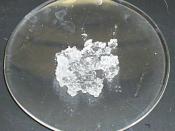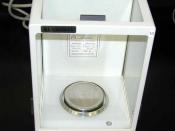Aim: To calculate the value of n in MgCl2.nH2O
Theory: Gravimetric analysis is where the amount of a specific chemical in a material is determined by converting it to a product which can be isolated completely and weighed. This is relevant to this experiment as the amount of water is an unknown value which is to be found by carrying out the analysis.
Heating to constant mass is when repeated heating, cooling then weighing is carried out until the mass of the substance is constant.
The number of moles of water in a substance can be found by measuring the loss in mass on heating.
MgCl2.nH2O MgCl2.nH2O
'n' can be calculated by comparing the mass of hydrated salt with the mass of anhydrous salt by heating to constant mass.
Apparatus: The equipment required is:
a porcelain crucible and lid
tripod
pipe-clay triangle
bunsen burner and heating mat
desiccator
tongs
a balance
hydrated barium chloride.
Method: To get rid of any water the crucible was heated, then allowed to cool in a desiccator and its mass was noted (M1). 2-3g of magnesium chloride was then added and the crucible reweighed (M2). The crucible and its contents were then reheated for 15 minutes, allowed to cool and again weighed (M3). The crucible and its contents were then heated, allowed to cool and weighed again, (M4), to make sure the loss in mass was complete. This step was repeated until M4 and M5 were constant.
Results: M1 = 39.59g
M2 = 41.62g
M3 = 40.64g
M4 = 40.63g
Average mass of crucible and anhydrous MgCl2 = 40.635
Mass of anhydrous MgCl2 (M4 - M1) = 1.045g
Number of moles of MgCl2 (GFM = 95.3g) = 1.045/95.3
= 0.012moles
Mass of H2O removed M2 - M4 = 0.985g
Number of moles...


